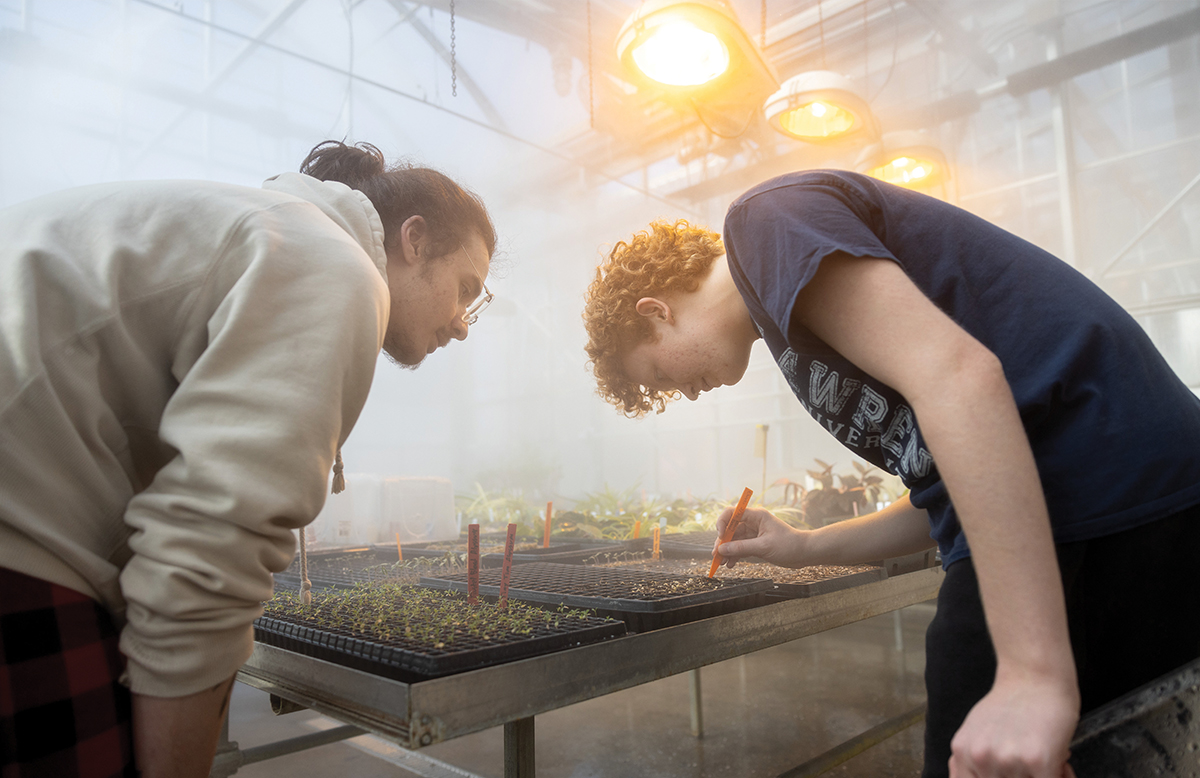In Vivo
It’s All About the Experience

Flip through the pages of any issue of Grow, and you might notice a thread connecting many of its stories. The students we highlight in this magazine can be found in fields and labs, in communities and classrooms, always learning through experience.
Experiential learning is a quintessential part of the CALS journey. Of course, we teach our students the fundamentals and evolution of advanced science; we teach them how to analyze and how to think (but not what to think). But it’s not all theory — much of what we teach is hands-on, applied. Our land-grant mission requires that we create opportunities for students to “dig in” to things. With this academic foundation, we help them build a repertoire of professional and practical skills, skills needed for entering the workforce or pursuing an advanced degree.
Our graduate students also engage in experiential learning through their participation in what is essentially an apprenticeship model. They are paired with an expert in the field, a professor who serves as an advisor. In addition to helping graduate students hone their understanding of complex subject matter, professors assist them in gaining key research skills necessary to answer questions. This can include laboratory or field work— how to pipette, care for animals, plan and carry out a large-scale study over acres of land, and use microscopes and other complex instruments and equipment.
Faculty also guide graduate students through proper research and communication methods in their field. They demonstrate how best to convey a study’s findings to farmers, industry, and others who need the information. And they model effective teaching in classrooms and provide occasions for graduate students to try them out. All the while, undergraduates participate in this process and gain related experience.
In broad strokes, this is how CALS faculty integrate teaching, research, and outreach into their daily work. In the process, they fashion numerous experiential learning opportunities for students of all levels. It’s a major time commitment, one that extends beyond a 40-hour work week. But the blended nature of these activities makes it extremely difficult to strictly account for the hours spent on each one.
The Universities of Wisconsin does keep tabs on instructional hours. Records can be found on its Faculty and Instructional Academic Staff Teaching Workload website. However, this effort only tracks hours spent in the classroom. As I’ve shown, teaching and learning happen in many places; and, as a land-grant college, we are required to extend the boundaries of learning to many different stakeholders. If the time professors spend in the classroom is the only activity taken into consideration, the comprehensive nature of education at places like UW and CALS goes unrecognized and underappreciated.
We’ll continue to bring you stories of experiential learning in the pages of Grow. This issue includes several. Our Class Act story highlights how student researchers can explore and learn while making significant contributions in the lab. One of our features focuses on the success of the UW Badger Pulling Team, an exceptional group of students who gain critical engineering knowledge through an international competition. And another feature, A College Try at CALS, highlights a new initiative called the Wisconsin Rural Scholars Program. The program gives high school students a taste of experiential learning before they even enroll in the college! It’s just a preview of how they stand to benefit from an education — an experience — at CALS.
This article was posted in Fall 2025, In Vivo and tagged experiential learning, instructional workload.
